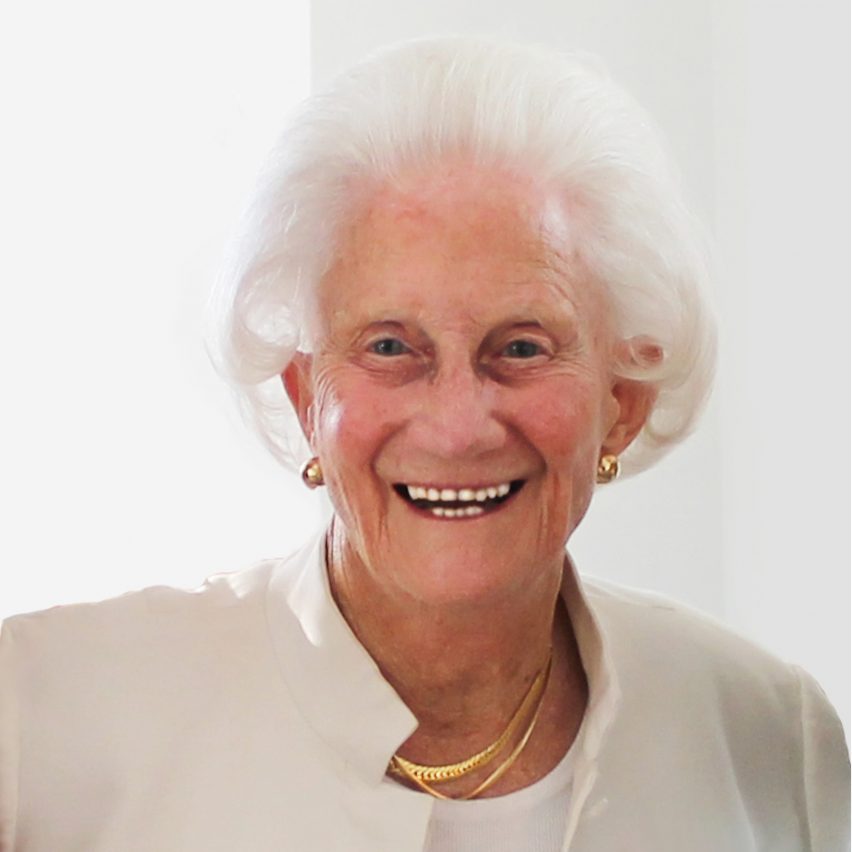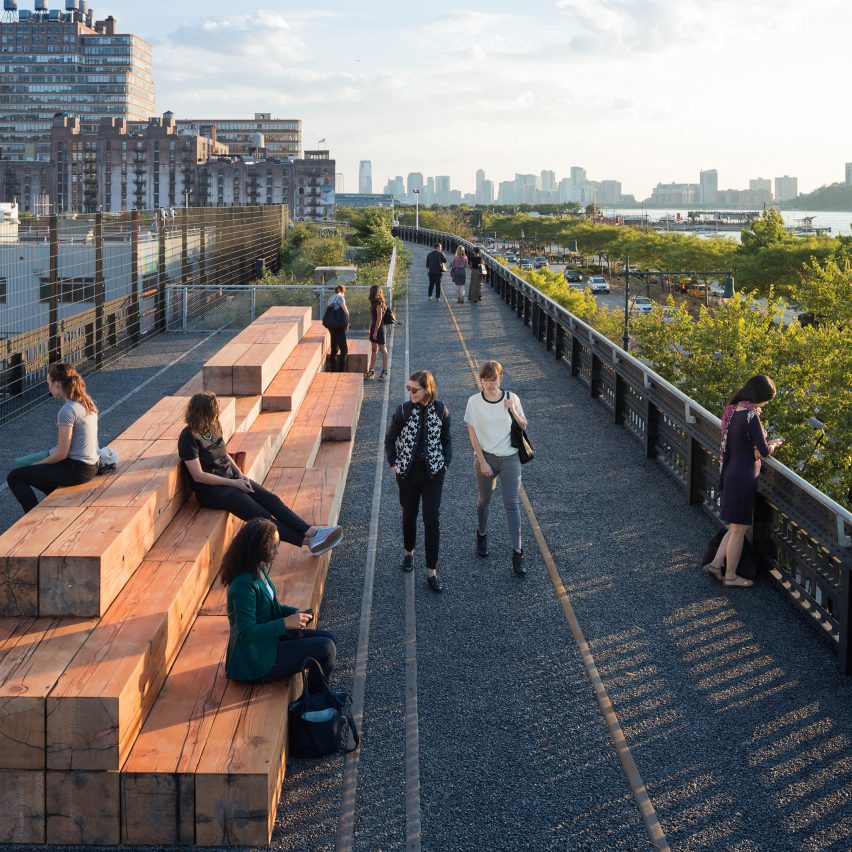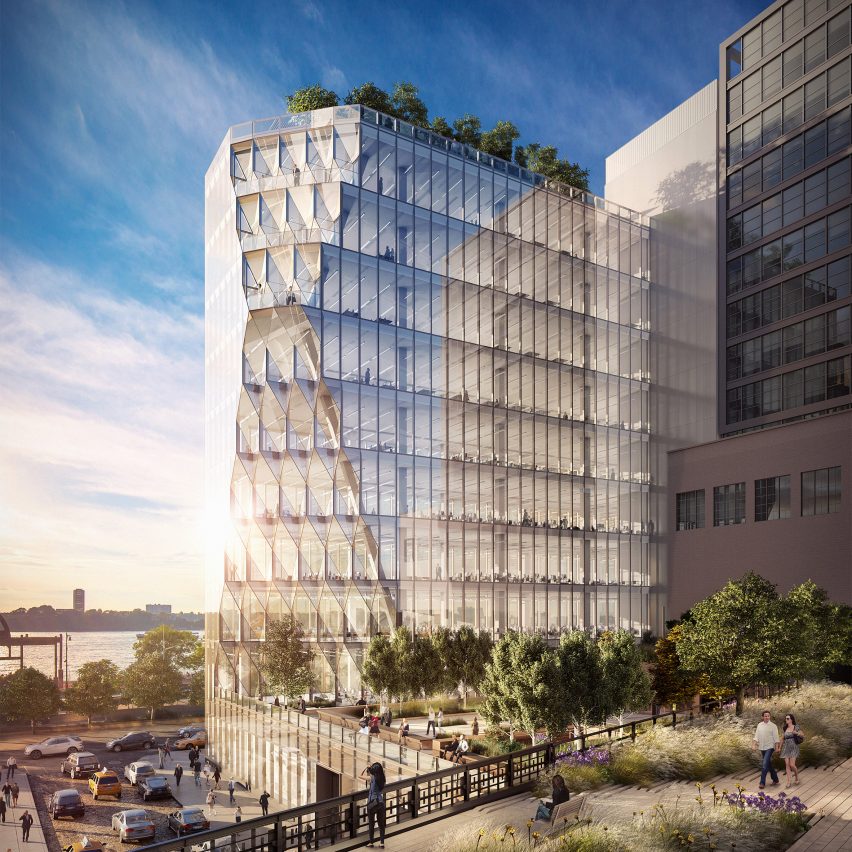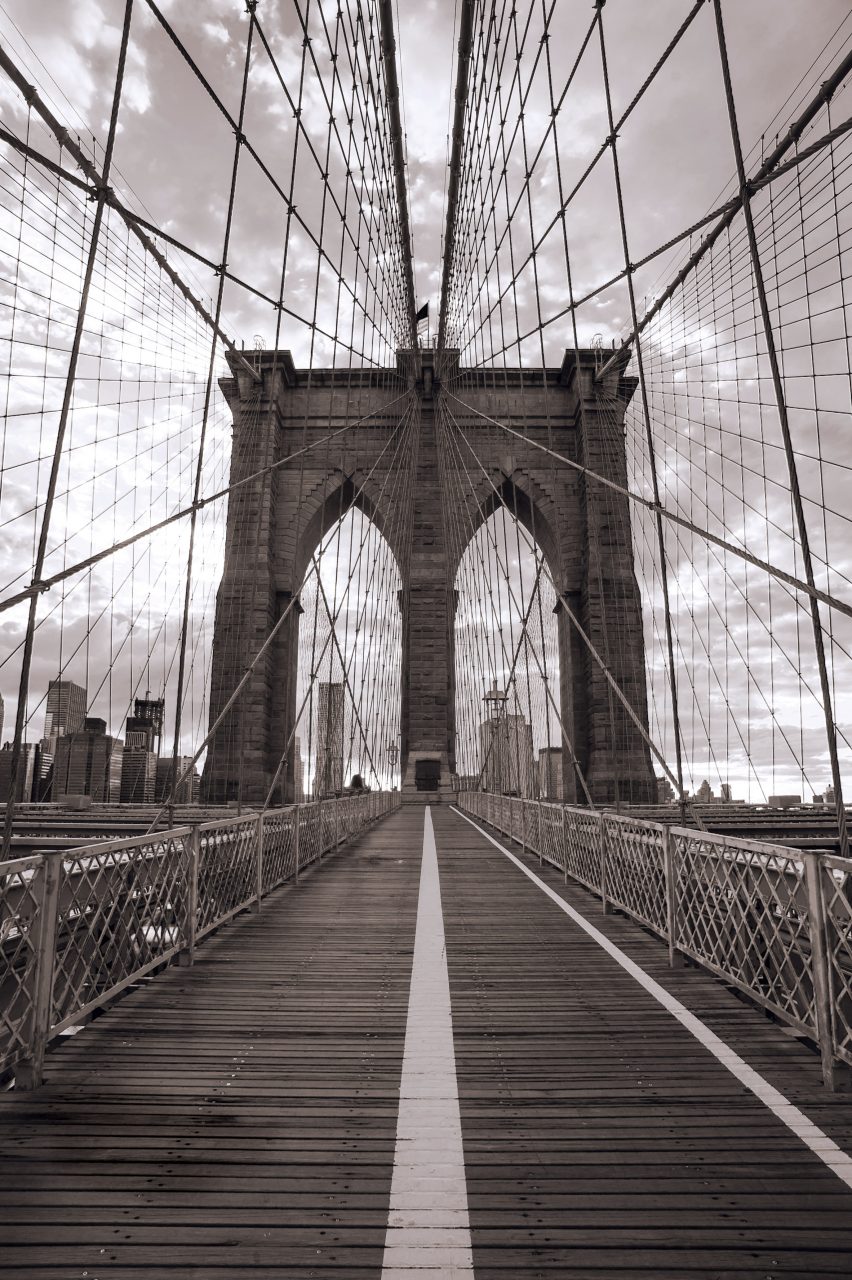
Hardly anyone can name more than one female architect, says director of new movie about women that built New York
"Women are doing some of the most prestigious work in New York" but nobody knows who they are, according to architect and filmmaker Beverly Willis, who wants to change this with her new movie about the women who have shaped the city.
Willis' film Unknown New York: The City that Women Built premiered last week, 6 June 2018. Written and directed by the 90-year-old architect, the 17-minute film documents the hundreds of female architects and engineers that have contributed to Manhattan's built environment.
Female architects don't receive the recognition they deserve
Her aim is to raise awareness of women working in the architecture industry, as not enough gain the recognition they deserve, she told Dezeen.
"One of the things that I like to do is ask people can they name five women architects," Willis said.
"Usually, people can only name one or possibly two, maybe three because people like Maya Lin, Zaha Hadid and Julia Morgan are well known, but past that hardly anybody can name another woman architect."

The American architect says this contradicts the fact that women are making major contributions to architecture, particularly in New York, giving examples like Studio Gang founder Jeanne Gang and Diller, Scofidio + Renfro partner Elizabeth Diller – who was recently named one of the world's most influential people by Time magazine.
"The irony of course is that women are doing some of the very most prestigious work in New York, Manhattan right now," said Wills. "So they're certainly being selected to do the premiere work."
Women have historically been left out of architectural records
As well as filmmaking, the architect set up the non-profit Beverly Willis Architecture Foundation in 2002, to improve the culture for women learning and working in architecture today through education.
She was prompted to launch the initiative in response to the lack of females recognised in architectural history books.
"I became very distressed at the age of 75 that women were not in the architectural history books, or any architectural references," Willis said.
"If you were in high school or college and were reading architectural history you saw no mention of women instead perhaps of Jane Jacobs," she added. "That type of mission undermines women and their reputations."

Born in Tulsa, Oklahoma, Willis set up her eponymous San Francisco-based design in 1954. The firm has completed a number of large-scale projects in the city, including The San Francisco Ballet Building and the transformation of three Victorian residences into the Union Street Stores shopping centre, which is credited as the first major adaptive reuse scheme.
She is also a founding member of the National Building Museum, in Washington DC and has written a number of publications and directed films, including a documentary that listed the women who worked for US architect Frank Lloyd Wright.
Film follows major moves to improve gender equality in architecture
The past year has seen a huge push to improve gender equality and women's recognition, through events and movements like International Women's Day, global marches and #MeToo.
Dezeen launched the Move the Needle initiative to help encourage diversity in the architecture and design industry after our survey of the world's 100 biggest architecture firms revealed a "quite shocking" lack of gender diversity at senior levels. A number of major firms, including Foster + Partners and Africa's largest architecture practice, Boogertman + Partners, promised to tackle their gender pay gap in response.
Following her inclusion on this year's Time 100 list, Diller told Dezeen that the male-dominated architecture industry is undergoing "dramatic change", with women in architecture experiencing a series of victories and celebrations.
Japanese architect Itsuko Hasegawa winning the inaugural Royal Academy Architecture Prize, Mexican architect Frida Escobedo being named as the second woman to design London's Serpentine Pavilion, which opened today, and Spanish architect Carme Pinós becoming the second woman selected to design the annual MPavilion in Melbourne are among the others.
Read on for an edited transcript of our interview with Beverly Willis:
Eleanor Gibson: Tell me about the film Unknown New York: The City that Women Built.
Beverly Willis: The background of the film is a programme which the Beverly Willis Architecture Foundation did called Built for Women, or Built by Women. In terms of its formation prior to going pubic it was very controversial because the argument was that for this programme to be successful we would need to have at least 100 women participating and the thought was that would be almost impossible to do. But the decision was to go ahead and send out a request for women who had been involved in design or building projects in Manhattan and so we were astounded when we got 350 responses.
Then, at that point, in terms of the exhibit that followed there was also a map that was done. I looked at the map and I was just amazed because it really showed how much of Manhattan was involving women in the design and building process. So that inspired me to do the film. The film is really a mapping which shows you the coverage of Manhattan of women's projects.

Eleanor Gibson: Who are some of the key architects and projects featured?
Beverly Willis: If my memory serves me correctly, and I hope I'm not wrong without looking this up, there were roughly 80 different women. I went back actually to Emily Roebling and Brooklyn Bridge, which was still in the 1800s and I did include some early 20th century women, prior to the second world war.
The emergence of women architects and designers, and participants basically in every aspect of not only building, but every aspect across the country and everything else was after the second world war. So primarily the majority of the women either practiced and are now retired or are current women practitioners.
Eleanor Gibson: What prompted you to create the film now?
Beverly Willis: One of the things that I like to do is that I like to ask people if they can name five women architects. Usually people can only name one or possibly two, maybe three because people like Maya Lin, Zaha Hadid and Julia Morgan are well known but past that hardly anybody can name another woman architect.
I like to ask people if they can name five women architects
Not every women in this film is an architect, because it also includes some engineers and a couple of developers and a contractor, but the majority of course are women architects. And so there are many, many outstanding women. Women like Jeanne Gang, Liz Diller or others like that who do the most incredible work.
My other interest in doing this, and probably the most important is the reason I founded the Beverly Willis Architecture Foundation, is that I became very distressed at the age of 75 that women were not in the architectural history books, or any architectural references.
If you were in high school or college and were reading architectural history you saw no mention of women instead perhaps of Jane Jacobs or the woman who created the environmental movement [Wangari Maatha]. That type of mission undermines women and their reputations.
The irony of course is that women are doing some of the very most prestigious work in New York, Manhattan right now. So they're certainly being selected to do the premiere work.

In my mind there is absolutely no debate about whether or not there should be a wide selection of women noted in architectural history, particularly for the 20th century when the women I'm thinking of blossomed into their own practices.
Eleanor Gibson: Why were these women overlooked?
Beverly Willis: Well there is a chauvinist concept that has been going back for even centuries, an effort on the male side to name women as designers. When I was a young architect it was quite overt – there would be articles in the newspaper and magazines that said women innately did not have the ability to design as well as men did.
That of course was not only applied to women in architecture but it was applied to women in art and music, and other artistic fields.
I became very distressed that women were not in the architectural history books
This was a belief on the part of men that was carried over for many decades before them and in more recent years this discussion has gone underground, if you will, because you no longer read these sorts of articles. But that doesn't mean the idea on part of many of the men that are practicing that still doesn't exist. Of course, I'm talking now about architectural historians, that still doesn't exist.
I can give you an example for the film I did called 100 Women Architects in the Studio of Frank Lloyd Wright. That film was shown to the premiere historian of Frank Lloyd Wright who had actually printed incorrect things about women in Frank Lloyd Wright's studio. All he did when he found out he had been publishing untruths was to shrug his shoulders.
That man, while he probably did a lot of primary research on aspects on Frank Lloyd Wright's career, he never bothered to do any primary research on the woman architects in the studio of Frank Lloyd Wright. But it wasn't just him, there are hundreds of books that have been written about Frank Lloyd Wright and my film was the research that had never been done in Frank Lloyd Wright's studio.

That film, which I did actually about 10 years ago, has become a worldwide phenomena and has recently been shown in Dublin, Ireland a few months ago and another programme here in the United States, so it's still being shown. It is a good illustration that the male historians have had no interest in giving any consideration, either past or present.
Eleanor Gibson: When did a change happen that caused today's female architects to be better recognised?
Articles said women innately did not have the ability to design as well as men
Beverly Willis: I'm not sure they are better recognised, that's why I did the film. I don't believe they are better recognised. Because if they were better recognised and I were to ask a man, and possibly a woman, to name five women architects they would be able to rattle off five, given the fact that in this film alone there are around 79 to 80 women.
Eleanor Gibson: There has recently been a lot of focus on improving diversity in architecture. Have you noticed a change in the promise for female architects?
Beverly Willis: Number one, I don't consider diversity the right word for women. There are more women in the United States than there are men. The women in terms of architecture make up approximately 20 per cent of all the American Institute of Architects (AIA) in the United States.
We do not have a count of the total number of women architects because if they are not members of the AIA, we have no way of counting them so we are not really sure of the exact percentage. But say it is roughly 20 to 25 per cent. That figure has been growing steadily since post world war. After the second world war there were only one or two per cent women architects in the United States. Again members of the AIA and I was one of them.
I don't consider diversity the right word for women
So each year there has been some growth and I think that the growth has been that, as women see other women succeed, they become more enthusiastic about studying architecture and believing that they can succeed.
Women take to it like a duck takes to water. In the schools today, they are roughly about 50 per cent of the class and they're also doing better: they're making high grades and they're really excelling at the university level. They seem to have extraordinary skills.
Eleanor Gibson: Who are the female architects shaping New York today?
Beverly Willis: I really hesitate to call out any specific names because even in my script I don't do that. I don't want to be in a position of rating the women, this is not a competition at all, as I say.
My motivation was numbers, I was after numbers so I could show a map that covered Manhattan. If I started to have a design competition where you would wind up with 10 or 15, I can't accomplish my aim, which was to show how much of Manhattan was being designed and built by women.
Eleanor Gibson: How important are their contributions to the city?
Beverly Willis: Incredible. The film shows these examples and the names of the women and people have expressed amazement to me. They're learning things that they've never known before: this is what I call a Wow film because people's response to the film is invariably "Wow, I didn't know that".